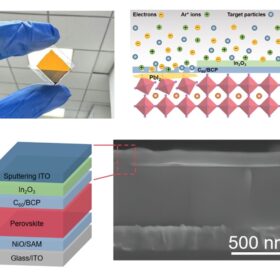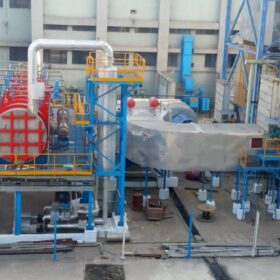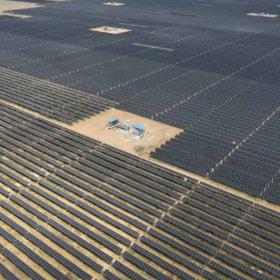All solar cell efficiencies at a glance – updated
The research group led by Professor Martin Green has published Version 65 of the solar cell efficiency tables. There are 17 new results reported in the new version.
Building self-reliance in the solar value chain
A multi-pronged policy mix has been adopted by the government to promote solar adoption. In the Budget 2024-25, a corpus of INR 10,000 crore was allocated to promote the solar industry, a 110% increase from the previous year. Solar manufacturing equipment have been exempt from the basic customs duty list to boost domestic manufacturing. In contrast, there is a 10% customs duty on the import of solar glass as we currently have enough capacity to meet all our domestic requirements.
Perovskite-silicon tandem solar cell based on indium oxide buffer layer achieves 30.04% efficiency
Researchers in China have fabricated a perovskite-silicon tandem solar cell that utilizes an indium oxide sputtering buffer layer to protect the perovskite absorber and the electron transport layer from potential damages arising from the electrode deposition process. The new layer not only ensured this protection but also showed strong optical and electrical properties.
Lithuania bans remote Chinese access to solar, wind, storage devices
Lithuania has decided to tighten its cybersecurity laws, banning manufacturers from countries deemed national security threats, including China, from remotely accessing management systems of solar, wind, and storage facilities. The European Solar Manufacturing Council has backed the move.
Looming Trump tariffs drive rush on US imports, push shipping costs higher
Freight costs are rising as businesses rush to import goods ahead of higher tariffs promised by US President-elect Donald Trump on Chinese and European products.
Longi unveils heterojunction BC solar cells with 27.3% efficiency
The Chinese manufacturer said the device is based on dense passivating contacts that reduce parasitic light absorption and improve passivation. It used a streamlined manufacturing technique that is reportedly about one-third more effective than TOPCon mainstream technology.
China cuts export tax rebate for solar products
China has reduced the export tax rebate for solar products, lowering refunded taxes for Chinese PV exporters and eating into their profit margins. The move might force some companies to increase export prices to mitigate potential financial losses.
Waaree Energies Q2 profit grows 17% YoY
Waaree Energies has reported a total income of INR 3,663.46 crore and net profit (profit after tax) of INR 375.66 crore for the second quarter of FY 2024-25.
Hybrid perovskite-organic solar cell reaches record-breaking efficiency of 24%
Korean scientists have fabricated a perovskite-organic solar cell with a uniform sub-nanometer dipole layer. The device recorded a power conversion efficiency of 24% under testing, a new record for lead-based hybrid perovskite-organic solar cells.
The Hydrogen Stream: NTPC setting up sea water to green hydrogen plant at Simhadri
NETRA, the R&D centre of NTPC, is setting up a 1 tpd seawater to green hydrogen plant at NTPC Simhadri coal-fired power plant near Visakhapatnam in Andhra Pradesh.















